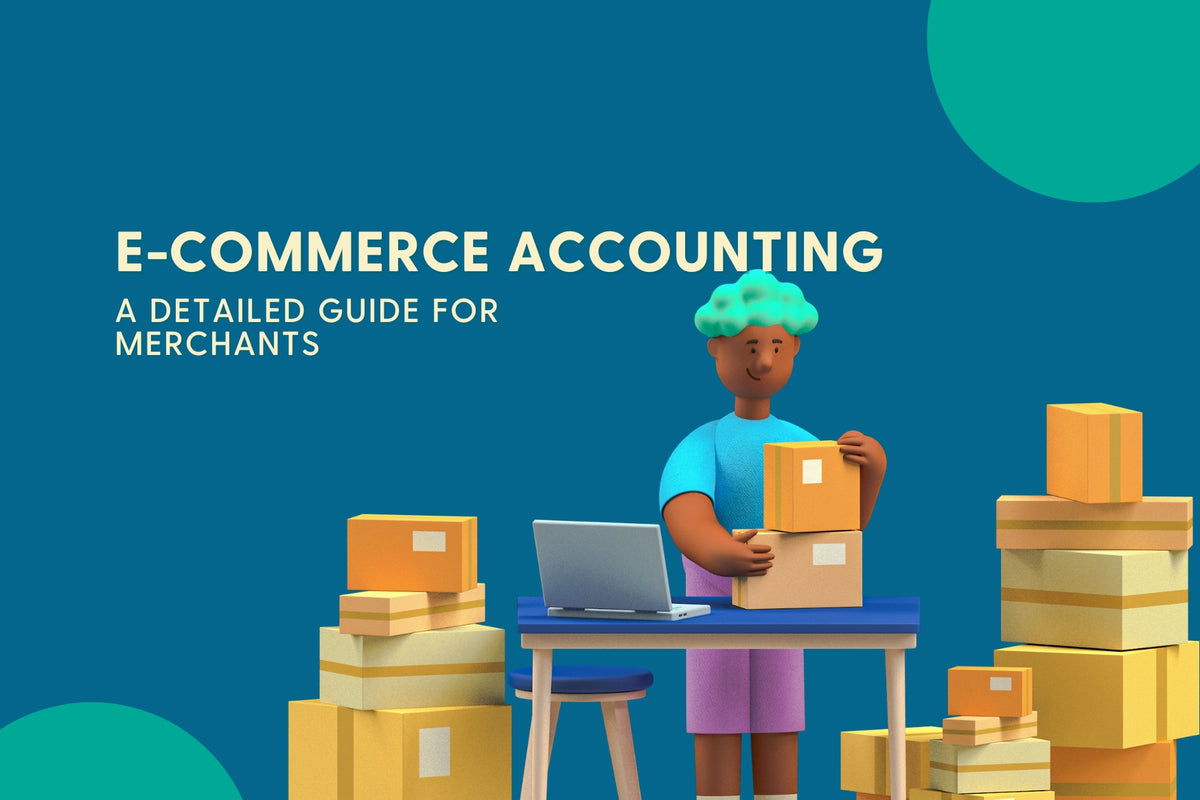Shopify has had a great year in 2020. The coronavirus pandemic has caused a downturn in global retail revenue. However, eCommerce sales have grown substantially as thousands of businesses moved online to keep afloat. This has led to Shopify international expansion in markets around the world. The focus market is in the Asia-Pacific, as Shopify uniquely offers assistance to SMBs.
A booming world of eCommerce
A staggering 1.4 billion people have joined the global middle class since 2009, and a further 1.6 billion are expected to join by 2030.
The global wealth boost has led to an eCommerce boom, with online retail sales hitting $4.2 trillion at the end of 2020. To put that into perspective, the entire UK economy is just $2.83 trillion. If eCommerce were a nation, it’d have the world’s fourth-largest economy.
This number is expected to grow to $6.1 trillion in 2023.
Notably, most of this growth will happen outside the US and Europe. Asia-Pacific is fueling the eCommerce growth and Shopify international expansion will focus on this region in 2021.

Shopify is leading the charge to empower independent local businesses around the world.
Shopify international expansion in 2020: Overview
Shopify has seen massive growth in 2020, largely due to their COVID-19 response and the shift to eCommerce. The Canadian company generously extended its free trial period to 90 days. As a result, it gave out hundreds of millions of dollars in loans. Plus, Shopify offered free webinars and resources to help merchants move their businesses online.
The numbers on the company’s balance sheet show that this strategy paid off.
Total revenue grew 47% year-on-year in the first quarter, 97% in the second quarter, and 96% in the third quarter over the previous year. The fourth-quarter report has yet to be released as of writing this article.
These numbers reflect the need for businesses to move online due to COVID-19. The coronavirus pandemic has certainly made many people look to online sales channels to keep their business afloat. Shopify international expansion plans have been given a nice boost as a result.
Shopify has been pushing international growth even without the pandemic. We'll look through some of their global projects in 2020 to see how e-merchants benefit from them.
Grab yourself a coffee. And let’s get into it.
New international selling features
With Shopify international expansion, new selling features have made it possible to deliver a fantastic shopping experience in any country. This UX upgrade will grow your conversions in new markets and ultimately scale your business.
There are two main new Shopify international selling features.
Local store domains
Shopify now allows you to create separate domains for different countries. Website visitors will be automatically redirected to their local domain where they can see your store in their language and currency.
This personalized experience makes your business more relatable and is more likely to result in conversions. In fact, 50% of consumers who search for a local store on Google will visit a local website within 24 hours.
On top of that, 80% of local searches that land on a website will convert.


Guitar brand East Wood Guitar displays its website in multiple currencies. When customers switch to their native currency, the product price and the filter by price will automatically update.
Your business might not be local, but it can be with the local language and currency. People relate to what they know and they’ll have an easier shopping experience when reading your product listings!
- Local domains and language are also SEO goldmine. Think about all those keywords people in Spain are pumping into Google that could be resulting in your business showing up - if only your copy was available in Spanish on a Spanish domain.
- Remember: You should never mix languages on a webpage. Doing so can confuse Google when it comes to indexing your page. Keep different languages on separate domains with unique indexing.
- Check that your web pages are indexed on Google using the Search Console tool. You can also use it to check your site’s SEO performance.
Custom FX
On the note of currency, Shopify’s own custom FX (foreign exchange) allows you to display your products in the local currency of your site visitors. The currencies shown are up-to-date and change with fluctuations.
There are 133 currencies to choose from, making it easy for shoppers to buy and for you to receive payment in your own desired currency. That means fewer fees and a better UX.
Research shows that localizing your business by offering local language and currency has a staggering $25 ROI for every $1 invested.
Expanding services globally
Shopify has been expanding services and integrations that allow merchants to better serve a global customer base. Merchants stand to benefit from the adoption of new ideas that will improve their business as they expand into new markets.
Shopify Capital, the Shop App, Shop Pay, and Shopify POS are some notable examples of new areas that Shopify is expanding into to improve merchant’s ability to run their businesses both online and offline.

Shopify Capital allows small businesses to get the funds they need to scale in difficult times.
- Shopify Capital: Shopify’s financial assistance service has helped thousands of businesses get access to cash during the COVID-induced economic downturn. Shopify Capital has given out more than $1.4 billion in cash loans since April 2016, including $252.1 million in the third quarter of 2020.
- Shop App: The new Shop App lets consumers browse local businesses, as well as track orders and follow packages in real-time. The new product discovery feature lets you follow businesses you’ve purchased from, as well as those in your local area, giving small businesses a much-needed boost.
- Shop Pay: Shop Pay allows customers to save their details securely in Shopify to save time when checking out. It also allows customers to pay in up to four separate installments, spreading out the financial hit and boosting your chances of making sales.
More tools for merchants makes Shopify a more attractive eCommerce platform than the current first-choices of many businesses in emerging economies - namely Amazon and AliExpress.
Access to Shopify Capital services is a game-changer for many businesses who would otherwise be put out by the coronavirus pandemic. This service isn’t just a rescue package, either - it’s also available to any business that can show they’ve got the ideas, the passion, and the salt to make it work.
Expansion into Asia-Pacific
There are now more active Shopify stores around the world than ever before. This is, in part, thanks to the platform’s forward-thinking in adopting new ideas and services to give merchants and their customers the best possible experience.
While most Shopify stores are still based in the US and Canada, which together made up 77% of the company's total sales in 2018, as well as the UK and Australia, which accounted for 11%, there are more opening in other regions, including APAC.
For example, Singapore represented 6.6% of Shopify’s total merchant revenue in 2017.

Source: Statista
E-commerce retail sales in APAC are expected to be worth more than the rest of the world combined by 2023.
APAC saw twice the growth in eCommerce sales as the rest of the world between 2014 and 2019. China is now the world’s largest retail market, and neighboring countries like Vietnam and Thailand are also seeing staggering growth and investment in the sector.
Shopify will be building stronger links with emerging markets like China, the Philippines, Vietnam, Thailand, and others in the 2020s. They have already opened an office in Singapore and are currently setting up operations on the ground in Shenzhen.
APAC is also a breeding ground for Shopify partners and developers. Leading apps like Boost Product Filter & Search, PageFly, and AliReviews, to name a few, were developed in the region.
Read more: Starting an online business for dummies all-in-one.
Cutting out the dropshippers
Many Chinese firms are supplying products to dropshippers - merchants who sell supplier’s products without ever handling them - who then sell them on for a profit.
Some of these suppliers are beginning to question when they don’t just cut out the middlemen and sell directly to consumers in America and elsewhere.

A growing number of Chinese suppliers are eager to take eCommerce into their own hands and ship directly to the customer, cutting out the middlemen in the process.
Shopify is well-positioned to benefit from this section of the Chinese market - and they’re taking steps to do exactly that by building a Shopify team in Shenzhen.
Shopify CEO Tobi Lutke has already said publicly that he intends to sign up Chinese exporters so Shopify can capitalize on a growing interest in direct-to-customer eCommerce in the Land of the Red Dragon and beyond.
Summary
- Dropshippers should beware of suppliers cutting them out.
- APAC firms will increasingly grow their own eCommerce presence.
- E-merchants can still benefit from penetrating APAC markets.
- Start thinking about what you can import into APAC, rather than what can be exported to the West.
- Note: APAC is weakly penetrated by credit card payments - cash on delivery is common, for example, in Thailand 35% of all transactions online are cash on delivery.
Social commerce expansion
In the plan for Shopify international expansion, social commerce is not something you should do on the side. People are choosing to shop on social media platforms at a rapidly increasing rate. This is about to explode with the new launch of Facebook Shops and Instagram Shops.
Shopify has partnered with Facebook, Inc. to be the muscle behind the new mobile-first storefronts on the world’s most popular social network.
Shopify merchants can sync their product catalog over to their Facebook Shop and even sell directly within the app with the new Facebook Checkout feature.

Facebook Shops are about to be the next frontier of social commerce. Make sure you’re not left behind.
The Canadian eCommerce platform has also partnered with Google to give merchants free listings on Google Shopping.
You’d be wise to make the most of these free sales channels. Your products can reach millions of people by using them effectively, which can only be a good thing.
Shopify has also made partnerships with TikTok and Walmart so merchants can sell on these platforms, as well.
TikTok sales channel
Shopify and TikTok have partnered to allow users to browse and purchase products directly within the social media app. The TikTok sales channel on Shopify allows merchants to list their products and create ads to reach millions of young people on the app.

The TikTok sales channel offers a new frontier for e-merchants in 2021. Source: Shopify.
Summary
- Using new sales channels to boost conversions will scale your business
- Most of these sales channels are free to use
- Shopify is partnering with social media platforms to get a head start in the new social commerce boom
- Merchants can benefit hugely from this - all with very little effort
Shopify Fulfillment Network and Shopify Shipping
Shopify acquired 6 River Systems in 2019 for $450 million and has since put it to work to create a US-wide Shopify Shipping network. This means faster shipping and happier customers.
Shopify Shipping is currently available in the US, Canada, and Australia. Merchants can take advantage of pre-negotiated rates and offer cheaper shipping rates to customers depending on your Shopify plan.

The Shopify Fulfillment Network increasingly has the muscle to back up large-scale expansion.
The expansion of Shopify Shipping and the Shopify Fulfillment Network - including a $1 billion investment into it - shows that the Canadian eCommerce giant is serious about competing against Amazon in North America and elsewhere.
Merchants benefit from cheaper and faster shipping, plus happier customers and more conversions as the Shopify Fulfillment Network grows.
Taking on the giant: Shopify vs Amazon
Perhaps the biggest question regarding the future of Shopify is whether it’ll be able to overcome eCommerce monolith Amazon, which controls a whopping 37% of US eCommerce. Shopify, by comparison, has 5%, although the Canadian firm is growing at a rapid rate, with an average CAGR of more than 50% in 2020.
While Shopify isn’t on the warpath, most people see Shopify as the good guy who wants small businesses to thrive. Amazon, in contrast, is the impersonal monopoly that wants everyone to conform to its rules to gain benefits.

Amazon’s dominance over the eCommerce space is taken for granted now - it could come undone.
Shopify definitely poses a threat to Amazon’s market dominance. Every day, hundreds of businesses move online with Shopify. The platform now supports more than a million merchants.
Each one that decides to work with Shopify will likely never return to the clutches of the Bezos empire.
Merchants will benefit from connecting with one another and creating communities within their niches to help business boom for everyone. Shopify offers the kind of environment where mutual success is beneficial. Amazon offers a soulless cubical in their bland mega-menu of a website.
- Amazon leaves merchants no choice but to compete on price
- Shopify allows merchants to compete with compelling brands and products
Shopify hasn’t tried to compete directly with Amazon. This is good because to do so would involve playing Amazon’s own game, and likely ripping up the relationships the firm has built with merchants in the process.
More businesses will flock to Shopify as it continues to expand around the world, bringing new services and tools for merchants. This is the best way to compete against the current eCommerce king.
Final thoughts
Shopify has had massive growth in 2020 and will continue to see more in the coming years. The Shopify international expansion will allow the company to build more of a presence and bring more benefits to merchants.
The question is: Will Shopify sell out to reach the top, or will it continue on its current path? It’s difficult to see the Canadian eCommerce company selling out any time soon. Shopify’s service relies on its relationships with merchants and on allowing them to create the best possible UX in their stores.
Dig in your heels and get ready for a massive year ahead for eCommerce.



